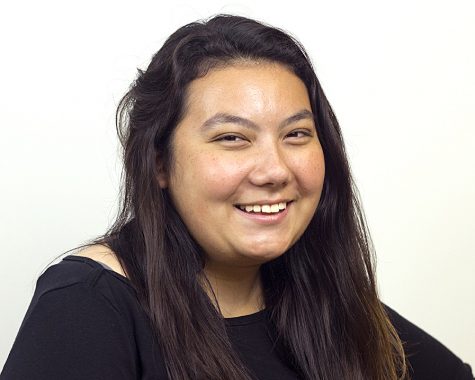Campus Pond to be site of eclipse-viewing party
August 20, 2017
Some could say the stars are aligned, as students will get to ring in the new school year with a solar eclipse on Monday.
According to physics department chair Steven Daniels, a solar eclipse is not likely to coincide with the first day of classes at Eastern for another hundred years, making it especially unique for new students.
“This is an incoming class that will be completely different that every other incoming class,” Daniels said.
To celebrate this eclipse, a viewing event is scheduled for noon to 2:30 p.m. on Monday at the Campus Pond.
“An eclipse is a fairly rare thing; having it on first day of school made it especially interesting,” Daniels said. “People do special things for eclipses all the time, and we thought we should get in on that, especially on the first day of school.”
The telescope in the Observatory, the Observatory itself and a pin-hole camera creation station will be set up to allow people to watch the eclipse.
The telescope will have a special filter on it to keep most of the sunlight out, Daniels said.
“It will let just a tiny bit of the light get through, just enough to make it a nice picture,” Daniels said.
Solar eclipse glasses will given away at the event along with T-shirts, pizza, hot dogs, chips and popcorn.
At one point, the moon will cover about 95 percent of the sun, in what is called “95 percent totality.”
“(What people will) see is a dark circle go across the sun at one point,” Daniels said. “You’ll notice that it’s darker than general, I think it will be a little brighter than a full moon night.”
Just before noon, the moon will start to pass in front of the sun. The eclipse will reach its peak at about 1:20 p.m., when it hits 95 percent totality.
The moon will go from shading one side of the sun to shading the other side, taking about an hour and a half to go in and another hour and a half to go out.
“It’s a whole process,” Daniels said.
Planning for the eclipse and events surrounding it started last year, around the same time a donation came in to purchase a solar telescope.
Sponsoring the eclipse-viewing event are the physics, geology and geography, and art departments; the President’s Office; Booth Library; the Office of Civic Engagement and Volunteerism; New Student & Family Programs; the Martin Luther King Jr. University Union; University Board and Housing and Dining. The different departments have tables and activities they are planning for the eclipse.
The Booth Library is set to have an exhibit and the art department will host a wall art display.
About 60 sciences classes from Casey-Westfield High School are scheduled to show up to watch the eclipse as well.
“This has turned into something much bigger than I thought it would be when I started,” Daniels said.
Daniels said the scientific community is fairly excited about the eclipse, as when the sun starts dying out scientists can start to see the outermost part of the sun’s atmosphere, called the Corona.
A solar eclipse can also be a social event, Daniels said.
At times, they have even “changed the course of history,” he added.
If there were fights or wars occurring, people would take the eclipse as a sign and stop, or change their behavior in other ways.
“It’s kind of a scary thing when sun just goes away,” Daniels said.
According to NASA, those who want to can view the eclipse safely by
- inspecting their solar filters before using them and discarding them if scratched or damaged
- supervising children using solar filters
- standing still and covering one’s eyes with eclipse glasses or solar viewers before looking at the sun
- removing their filter only after looking at the sun, not while looking at the sun
- not looking at the un-eclipsed or partially eclipsed sun through an unfiltered camera, telescope, binoculars, or other optical device.
- always using a safe solar filter to view the sun directly
- putting your eclipse glasses on over their eyeglasses if they wear them
Cassie Buchman can be reached at 581-2812 or dennewsdesk@gmail.com or cjbuchman@eiu.edu

















![[Thumbnail Edition] Senior Foward Macy McGlone, getsw the ball and gets the point during the first half of the game aginst Western Illinois University,, Eastern Illinois University Lost to Western Illinois University Thursday March 6 20205, 78-75 EIU lost making it the end of their season](https://www.dailyeasternnews.com/wp-content/uploads/2025/03/WBB_OVC_03_O-1-e1743361637111-1200x614.jpg)




















































